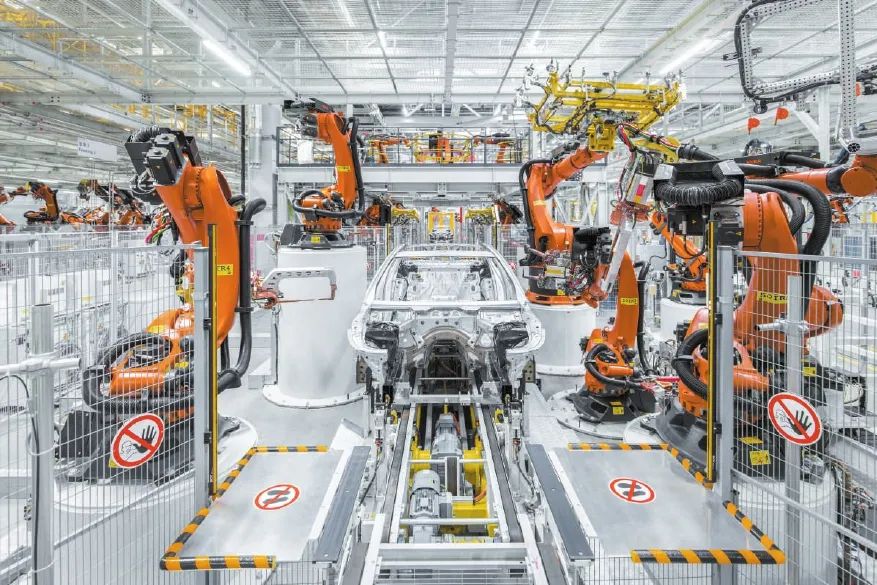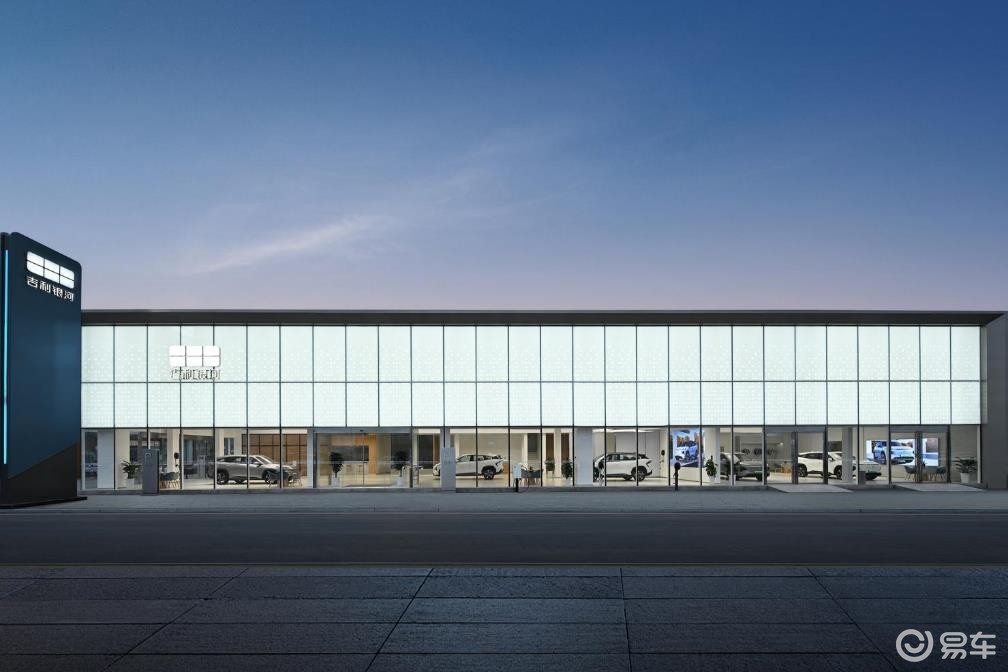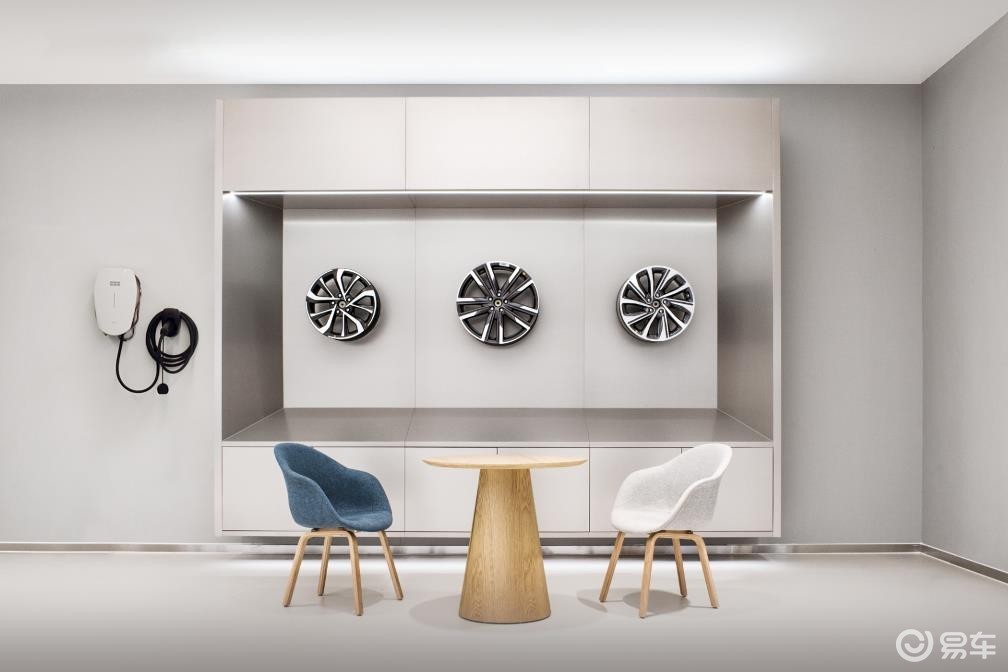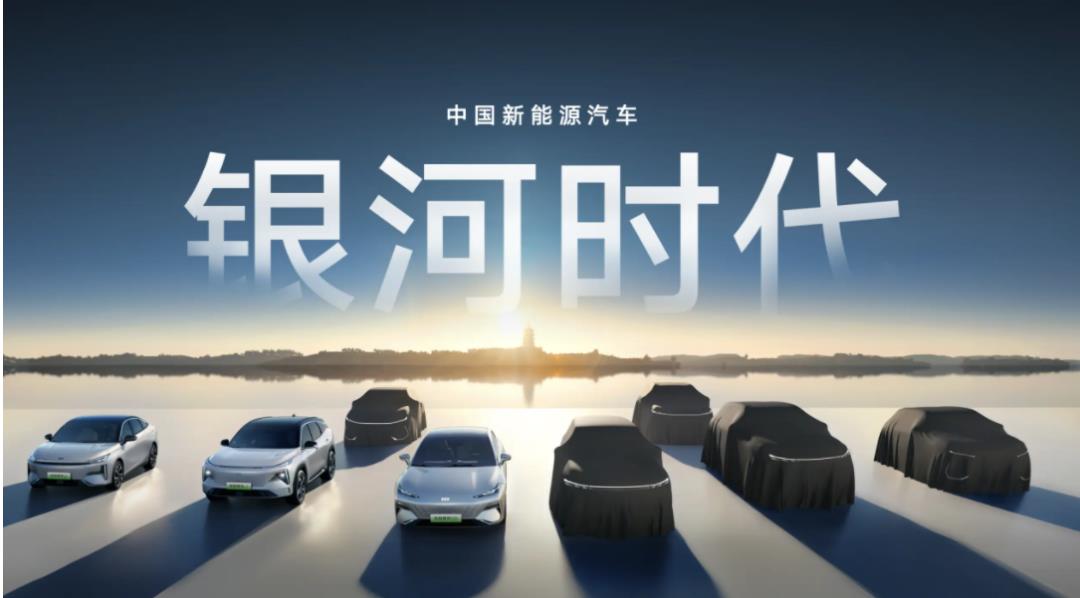

1. Macro policies
1. MIIT new energy vehicle subsidy final review released
On October 8, MIIT released the "2018-2020 New Energy Vehicle Promotion and Application Subsidy Fund Liquidation Audit Final and 2020-2022 Subsidy Fund Allocation Announcement". It shows that the subsidy funds after the 2018, 2019 and 2020 New Energy Vehicle Promotion Subsidy Liquidation Audit are 4.005 billion yuan, 4.532 billion yuan and 4.675 billion yuan respectively, totaling more than 13.20 billion yuan; 2020-2022 The annual allocation is nearly 14.90 billion yuan.
In the past few years, subsidies have played an important role in the development of new energy vehicles. New forces have emerged, established companies have grown, and advance funding has reduced the cost of capital for enterprises. Now, the era of new energy vehicle subsidies has also entered the countdown to the end.
2. MIIT launches the first batch of industrial chain supply chain ecosystem construction pilots
On October 10, MIIT announced that it has identified the first batch of 12 cities in Hangzhou, Wuhan, Chengdu, Ningde, Nantong, Weifang, Hefei, Zhuzhou, Guangzhou, Shenzhen, Baotou, and Qiqihar to carry out pilot projects for the construction of industrial chain supply chain ecosystems.
Comments: The pilot method has played an important role in our country’s economic construction, especially in the case of unstable international environment, it is particularly important to ensure the health of the supply chain ecosystem of the industrial chain. The "chip shortage" of the automobile industry is a typical example. The pilot work will escort the development of the automobile industry in our country.
3. Guangdong: The implementation of vehicle and vessel tax standards has been extended to the end of 2027
On October 11, Guangdong Province issued a notice on the continuation of the implementation of the specific applicable tax amount of the vehicle and vessel tax, and decided to extend the specific applicable tax amount of the vehicle and vessel tax stipulated in the "Notice of the People’s Government of Guangdong Province on Adjusting the Specific Applicable Tax Amount of the Vehicle and Vessel Tax" (Yuefu [2017] No. 103) until December 31, 2027. The reduced two tax standards continue to maintain the lowest level in the country.
Comments: In our country’s automobile consumption, local policies have always played an important role, especially the economic provinces attach great importance to this, Guangdong, Jiangsu, Zhejiang, etc. have introduced their own incentive policies, reducing the burden on consumers is conducive to stimulating consumption.
4. The first international standard for autonomous driving test scenarios led by our country was released
On October 13, MIIT officially released the first international standard ISO 34501 in the field of autonomous driving test scenarios led by our country: "Road Vehicles, Autonomous Driving System Test Scenarios, Vocabulary". This standard is the first in a series of international standards planned by our country and experts around autonomous driving test scenarios. In addition, there are ISO 34502 security evaluation framework, ISO 34503 design and operation scope, ISO 34504 scenario classification, and ISO 34505 evaluation and use case generation.
Comments: autonomous driving is the development direction of the automotive industry, but the lack of standards and regulations has also caused many problems, our country led the development of this standard has two meanings, one is to work with countries to end the state of disorderly development; the second is our country led the development of the first international standards, also represents China’s autonomous driving development at the international leading level.
5. General Office of the State Council: Implement the phased reduction of some passenger car purchase taxes and other policies
On October 26, the General Office of the State Council issued a notice on the key task division plan for the 10th national video and telephone conference to deepen the reform of "decentralization, management and service". It mentioned that the implementation of the phased reduction of some passenger car purchase taxes, the continuation of the exemption from the purchase tax of new energy vehicles, the relaxation of the restrictions on the movement of used cars, and the cancellation of restrictions on pickup trucks entering the city.
Comments: With the advancement of the reform of "decentralized services", the automobile market is expected to become more active, which will help to further release the potential of economic growth.

2 Industry trends
1.The national car ownership reached 315 million
On October 8, the Ministry of Public Security released the latest statistics. As of the end of September 2022, the number of motor vehicles in the country reached 412 million, including 315 million cars; 499 million motor vehicle drivers, including 461 million car drivers. 17.40 million newly registered cars in the first three quarters, 6.295 million of which were newly registered in the third quarter, and the monthly average registration volume was significantly higher than that in the first half of the year. In addition, 3.713 million new energy vehicles were newly registered in the first three quarters, and the ownership reached 11.49 million, accounting for 3.65% of the car ownership.
Comments: The ownership data shows that the peak of automobile production and sales in our country has ended, but the total amount is still growing, the demographic dividend has not all disappeared, and the number of registered drivers is still in a state of high and steady growth. In the ownership, the proportion of new energy vehicles will continue to increase, which is a very noteworthy trend.
China Automobile Association: 2.61 million cars were sold in September, and the market share of new energy vehicles was as high as 27.1%.
On October 11, the China Association of Automobile Manufacturers released the latest data showing that in September our country’s automobile production and sales completed 2.672 million and 2.61 million vehicles respectively, an increase of 28.1% and 25.7% year-on-year respectively. From January to September, automobile production and sales completed 19.632 million and 19.47 million vehicles respectively, an increase of 7.4% and 4.4% year-on-year respectively. In addition, the sales of new energy vehicles in September were 708,000 vehicles, an increase of 93.9% and a market share of 27.1%.
Comments: our country’s new energy automobile industry has entered a period of rapid growth, with a market share of 27.1%, which shows that our country’s new energy automobile industry can get rid of subsidy support and rely on market regulation.
3. Ministry of Ecology and Environment: China’s new energy vehicle production and sales rank first in the world
On October 21, the press center of the 20th National Congress of the Communist Party of China held a press conference. Zhai Qing, a member of the party group and vice minister of the Ministry of Ecology and Environment, exchanged views with reporters on the theme of "building a beautiful China where man and nature coexist in harmony". Zhai Qing said that in 2021, the country’s carbon dioxide emissions per unit of GDP decreased by 34.4% compared with 2012, coal’s share in primary energy consumption dropped from 68.5% to 56%, and the scale of development and utilization of renewable energy and the production and sales of new energy vehicles ranked first in the world. Green has gradually become the base color for high-quality development.
Comments: Under the background of "double carbon", our country’s renewable energy, new energy vehicles and other industries are developing rapidly.
4. The cumulative turnover of the national carbon emission trading market exceeds 8.50 billion yuan
On October 27, Li Gao, director of the Climate Change Department of the Ministry of Ecology and Environment of China, said that in July 2021, the national carbon emission trading market will officially start online trading. As of October 21, 2022, the cumulative transaction volume of carbon emission quotas is about 196 million tons, and the cumulative transaction volume is 8.58 billion yuan. The market operation is generally stable and orderly.
Comments: The national carbon emission trading market is an important policy tool for implementing the "double carbon" goal and an important engine for promoting green and low-carbon development.

3 International situation
The US government will invest nearly 60 billion dollars to improve the transportation system
On October 11, the US government announced that it would invest nearly 60 billion dollars in roads, bridges, tunnels, carbon reduction and safety improvements in all 50 US states. Transportation Secretary Pete Buttigieg said the new funds will be used for projects such as reducing carbon emissions and establishing a nationwide electric vehicle charging network along highways.
Comments: The establishment of a national electric vehicle charging network along the expressway is worthy of attention, and our country is also accelerating the layout of charging facilities on the expressway, which can learn from each other.
2. Nissan, Ford, and Mercedes-Benz withdraw from Russia
On October 11, Nissan officially announced its withdrawal from the Russian market, and the factory and sales center were transferred to local Russian state-owned institutions. On October 26, Mercedes-Benz Group announced that it would withdraw from the Russian market and sell its shares in the Russian subsidiary to local car dealer Avtodom. On the same day, Ford Motor announced that by selling its 49% stake in the Russian joint venture, Ford finally ended its previously suspended Russian business.
As the conflict between Russia and Ukraine continues, automakers see no hope of restarting their business and have chosen to withdraw from Russia.
South Korea’s car exports rose by 34.7% in September
On October 14, the "September Automobile Industry Trends" released by the Ministry of Industry, Trade and Resources of South Korea showed that the export volume of South Korean automobiles in September was about 193,000 vehicles, an increase of 27.5% year-on-year; the export volume was 4.79 billion US dollars, an increase of 34.7% year-on-year, of which the proportion of environmentally friendly models increased significantly. Export volume and export volume both achieved double-digit growth for three consecutive months.
Comments: Sales of Korean cars in the Chinese market have declined, but exports have risen sharply, which is a phenomenon worthy of attention, providing new ideas and lessons for Chinese auto companies to export overseas.
4. Intel’s autonomous driving company Mobileye went public
On October 26, Mobileye, an autonomous driving company owned by Intel, officially listed on NASDAQ in the United States under the stock code MBLY, and raised $861 million through an initial public offering (IPO). The IPO price was $21/share, and the stock price rose 38% on the first day of listing, and the market value reached about $23 billion, but it was still lower than expected.
Comments: Mobileye’s listing was rather bumpy, and it caught up with the cold winter of the US stock market and the low tide of financing in the autonomous driving industry. Its valuation has shrunk significantly compared to the original.
5. Argo AI, backed by Volkswagen and Ford, goes out of business
On October 26, Ford Motor announced that Argo AI, a promising self-driving technology development project that it had raised billions of dollars from Ford and Volkswagen, would be shut down and disbanded. Ford also blamed the project for its loss last quarter.
Comments: With L4-level autonomous driving in the distant future, automakers are unwilling to burn money endlessly. Instead, they have turned to L2 and L3-level intelligent driving, which is easier to commercialize. They are no longer limited to self-research, but seek external cooperation.
6. ZF to spin off Passive Safety Division
On October 26, German parts giant ZF announced that the group has decided to spin off its passive safety division and make it an independent company by the end of 2023.
In the field of automotive passive safety, ZF is the second largest supplier in the world after Autoliv, but whether it is its own debt pressure or hopes to further expand in this field, ZF has made the decision to split up and intends to introduce external investors for it.
7. Musk completes acquisition of Twitter and fires Twitter CEO
On October 28, Twitter filed a document with the Securities Exchange Commission (SEC) showing that on October 27, Twitter completed a merger with Musk’s control company X Holdings II. Musk acquired Twitter for $54.20/share in cash. After the transaction was completed, Twitter was delisted from the New York Stock Exchange on October 28. After entering Twitter, Musk fired a number of executives at the first time, including Twitter CEO Parag Agrawal, who was fired on the spot.
Comments: From April to the end of October, it took half a year, and there was another large-scale acquisition in the history of global science and technology, and Musk’s social network era was officially opened.

4 Company News
1.Volkswagen and Horizon have a joint venture to strengthen autonomous driving research and development in China
On October 13, the cooperation between Volkswagen Group and Horizon was officially announced. The cooperation includes two aspects: one is that Volkswagen Group invests in Horizon; the other is that CARIAD, a software company of Volkswagen Group, has joined hands with Horizon to establish a joint venture in China and holds a 60% stake in the joint venture. Volkswagen Group will invest a total of about 2.40 billion euros in this regard. The two parties will jointly develop full-stack advanced driver assistance systems and autonomous driving solutions for the needs of the Chinese market. The transaction is expected to be completed in the first half of 2023.
Comments: Volkswagen Group and Horizon cooperate to get what they need. Volkswagen Group has accelerated the pace of localization of autonomous driving technology in China.
2. BYD and Great Wall Motors went to the Paris Motor Show, and a variety of models were launched in Europe
From October 17th to 23rd, the 2022 Paris Motor Show was held at the Porte de Versailles Exhibition Center in Paris, France. BYD, Great Wall Motors, etc. all participated in the exhibition with a variety of products. BYD Han, Tang and ATTO 3 (domestic name Yuan PLUS) started delivery in many European countries; Great Wall Motors presented Wei brand and Ola brand, among which Wei brand Mocha PHEV and Ola Good Cat were launched in Europe and began delivery at the end of the year.
The appearance of Chinese brands at the Paris Motor Show has attracted a lot of attention. In the past year or two, Chinese brands have accelerated their entry into the European market, especially targeting the European new energy vehicle market.
3, Sailis 100 million yuan to establish a new energy vehicle manufacturing company
Tianyancha shows that on October 17, Chongqing Sailis New Energy Vehicle Manufacturing Co., Ltd. was established. The legal representative is Tang Yi, with a registered capital of 100 million yuan. The business scope includes auto parts and accessories manufacturing; auto parts research and development; new energy vehicle sales; new energy vehicle production and testing equipment sales; new energy vehicle power exchange facilities sales. The company is wholly-owned by Dongfeng Xiaokang Automobile Co., Ltd., which is a wholly-owned subsidiary of Sailis Group’s joint stock company.
Comments: After being deeply tied to Huawei, Cyrus’ business has seen rapid growth.
4. BMW Group signs Envision Power to supply batteries to US factories
On October 19, the BMW Group announced the start of a new cooperation project with Envision Power. The BMW Group will purchase the next generation lithium-ion cells produced by Envision Power for the next generation of electric vehicles to be produced at the Spartanburg plant in the United States in the future. Envision Power will build a new factory in South Carolina to produce these cells. The factory plans to have an annual capacity of 30GWh and start production in 2026.
Comments: In early September, BMW announced that it had signed a battery production demand contract worth more than 10 billion euros with Ningde Times and Yiwei Lithium Energy. By finalizing the three major battery manufacturers of Envision Power, Ningde Times and Yiwei Lithium Energy, BMW’s power battery supply in China, Europe and the United States is guaranteed.
5, GAC Aian completed the A round of financing 18.30 billion yuan
On October 20, GAC Group announced that GAC Aian was publicly listed on the Guangzhou Equity Exchange, implemented capital increase and share expansion, completed the A round of financing, and introduced 53 strategic investors. As of the announcement date, all investors have completed the signing and payment. The total amount of financing was 18.294 billion yuan, and 17.72% of the shares were released.
Comments: Backed by GAC Group, bold attempts at mixed reform, and significant sales have made GAC Aian highly sought after in the capital markets.
6, Guoxuan Hi-Tech: Fitting meter 11.50 billion yuan to build a power battery project
On October 26, Guoxuan Hi-Tech issued two announcements saying that it plans to build power battery projects in Liuzhou, Guangxi and Hefei, Anhui. Among them, the investment is about 4.80 billion yuan, and the annual output of 10GWh power lithium battery production base is newly invested in Liuzhou; the investment is about 6.70 billion yuan, and the annual output of 20GWh power battery project of Guoxuan New Station is invested in Hefei New Station High-tech Zone.
Comments: With the domestic new energy vehicle industry booming, major power battery manufacturers have also accelerated the pace of capacity expansion.
7. Evergrande announced the official start of delivery of Hengchi 5, with the first batch of 100 vehicles
On October 29, Hengda’s Hengchi Automobile announced that Hengchi 5 was officially delivered, with the first batch of 100 vehicles. It is understood that Hengchi Automobile has established delivery service centers in 19 cities in China, including Beijing, Tianjin, and Shanghai, and subsequent batches of vehicles will be delivered to users one after another.
Comments: As Hengda’s first production car, Hengchi 5 is driving towards users in a mix of expectations and doubts. As for the follow-up, we can only wait and see.
8, the total debt 8.113 billion yuan, GAC Fick filed for bankruptcy
On October 31, GAC Group announced that it agreed to apply to the court for bankruptcy because of the joint venture GAC Fick insolvent. The announcement shows that as of September 30, 2022, GAC Fick’s (unaudited) total assets were 7.322 billion yuan, total liabilities were 8.113 billion yuan, and the asset-liability ratio reached 110.8%. The assets were insufficient to pay off all debts and were obviously insolvent. To this end, GAC Fick plans to file a bankruptcy application with the court in accordance with the current laws and regulations such as the Bankruptcy Law.
Comments: A once-promising "marriage" between China and foreign countries ultimately failed to avoid the outcome of a "breakup".





























